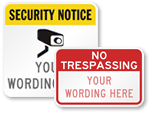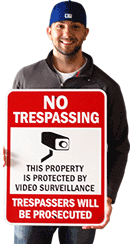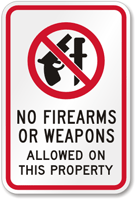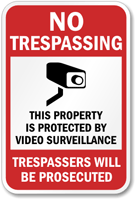Regarding external theft, employers are liable for theft damages claimed by employees if they were negligible in securing the workplace. If the employer could have reasonably foreseen the theft, the employer was liable to take security measures or inform employees of the risk. A failure to do so is grounds for theft liability: the degree of negligence will determine the extent of liability. For instance, if a trespasser steals employee belongings from the locker room, employers are not responsible because the locker room accommodation proves “reasonable care” was taken to protect employee property. Furthermore, if it can be proved that employees knew of the risks of theft, then the reasonable expectation of security on the employer is diminished. Employers can protect their workplace from theft by enhancing security, posting CCTV signs, security signs, and
no trespassing signs. Employers can also invest in theft insurance to protect against damage claims.


















